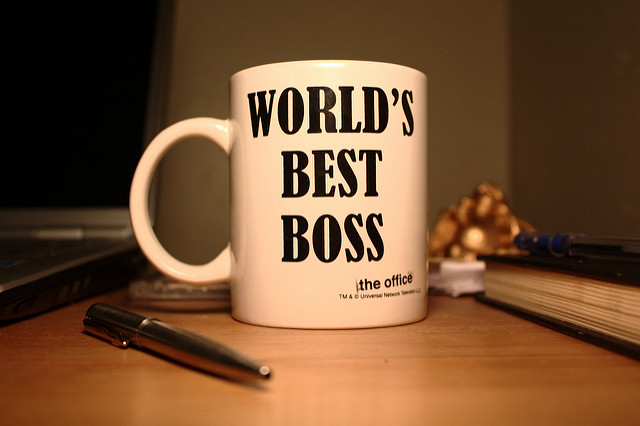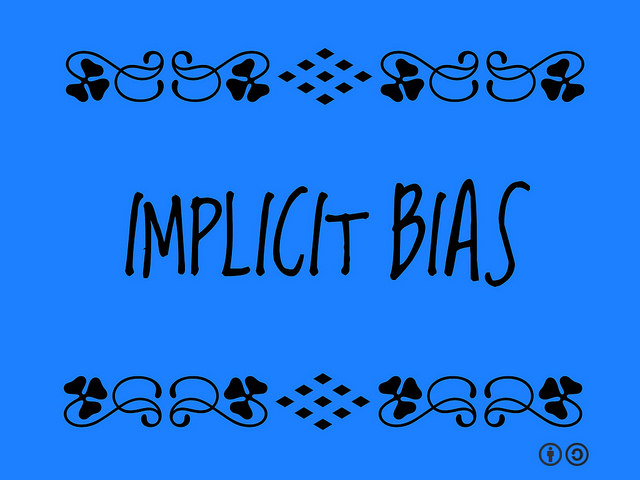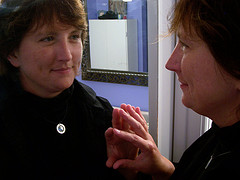|
|
|
Monday, February 10th, 2020

Poking through 11+ years of posts I find information that’s as useful now as when it was written.
Golden Oldies is a collection of the most relevant and timeless posts during that time.
Way back in 2006 when I wrote “MAP—Your Silver Bullet” the world was a different place. Tech hadn’t yet sold it’s story that it would save the world and human bosses were still the key to performance and productivity.
Read other Golden Oldies here.
MAP—your silver bullet
I’ve got a secret to share. Most managers spend time, energy and money (their company’s and their own) in an effort to grow from manager to leader. They study examples and best practices, read books, attend seminars and classes, take advanced degrees, check out software, turn to the spiritual (if so inclined)—you name it and it’s been tried.
The dream is to find a silver bullet; the reality is various levels of incremental improvement; the payoff is enormous—both tangibly and intangibly.
Now for the secret. You already possess the closest thing to a silver bullet that exists and it’s right in your mind.
That’s right, it’s your MAP and, like a snowflake, it’s totally unique—yours, and yours alone. And the magic that turns the bullet from lead to silver is your ability to consciously choose to change your MAP through your own awareness.
How cool is that? The very thing that frees you to soar and it’s not only yours, but also within your control. Who can ask for anything more?
Never forget! You are the silver bullet!
Fast forward nine years and tech had sold business on the idea that it could do anything and fix everything. When I saw the article by Kentaro Toyama I thought it was time to revisit the subject.
Technology Alone Can’t Save the World
According to Kentaro Toyama, the W.K. Kellogg Associate Professor of Community Information at the University of Michigan School of Information and self-described “recovering technoholic,” technology isn’t the panacea it’s cracked up to be.
“Technology works best in organizations that are run well to begin with. (…) The technology industry itself has perpetuated the idea that technology will solve the world’s problems. (…) Everyone wants to believe the work they do is good for society. But a lot of people in the industry have drunk a little too much of their own marketing Kool-Aid.”
What is often ignored is that people are a necessary ingredient for the Kool-Aid to actually work.
The tech eco-system forgets a lesson driven home by Bill Gates in the 1995 book The Road Ahead.
“The first rule of any technology used in a business is that automation applied to an efficient operation will magnify the efficiency. The second is that automation applied to an inefficient operation will magnify the inefficiency.”
Aetna Insurance found this out when they first equipped their claims processors with their own terminals connected to the mainframe (before the advent of personal computers).
The effort was considered ground-breaking and was touted as a way to streamline the claims process.
It failed miserably, because the process itself wasn’t redesigned.
In short, claims had multiple steps with approval required at each. Because the process stayed the same, i.e., claims stalled in electronic form when someone in the approval process was on jury duty or out sick just as they did in the paper version.
Once people redesigned the process the desired efficiencies were reaped well beyond expectations.
Technology is a tool, not a silver bullet; the only real silver bullets are found within the human mind.
Ultimately the right thing is for us to find the optimal use of technology — not to eliminate it, but also not to assume that it can replace human skills.
Flickr image credit: Jason Rogers
Posted in Culture, Golden Oldies, Personal Growth | No Comments »
Monday, March 18th, 2019

Poking through 11+ years of posts I find information that’s as useful now as when it was written.
Golden Oldies is a collection of the most relevant and timeless posts during that time.
You got MAP (mindset, attitude, philosophy™), I got MAP, all us humans got MAP. MAP reflects your values — whatever they may be — and culture is MAP in action.
Read other Golden Oldies here.
What does the boss really contribute to their organization?
The culture; it’s the boss’ MAP that forms and shapes the culture for their organization.
It doesn’t matter if it’s a mom and pop operation, startup or global giant; whether the company has two, two thousand or twenty thousand employees; whether the boss is called owner, founder, president, or CEO.
Cultural ideas can’t percolate up from the ranks without a top boss who enables the bottom-up culture in the first place, as well as providing the fertilizer that allows ideas to bloom.
It’s not enough to announce the cultural attributes in which you believe, such as no politics, and then ignore political actions because you believe that your senior staff are adults and won’t engage in behavior that goes unrewarded.
Even those who manage culture by benign neglect must see to it that there are repercussions for actions that flaunt the corporate culture just as there are for actions that violate legal issues such as harassment.
And all this is just as true for the individual subcultures that establish themselves around every manager in the company all the way down through team leader.
Creating and caring for the culture should be written into every manager’s job description at every level.
If that seems a bit extreme, keep in mind that study after study has proven that culture affects productivity, engagement, innovation and retention.
Image credit: Kumar Appaiah
Posted in Culture, Golden Oldies, Retention | 1 Comment »
Tuesday, August 14th, 2018

Bias, implicit or not, intentional or not, is at the forefront of most companies and bosses’ minds. Companies spend thousands on various kinds of anti-bias training.
But based on decades of data, not much seems to change.
Perhaps that’s because bias isn’t “fixable” or, as Lily Zheng, a diversity and inclusion consultant, says, Bias isn’t like an upset stomach that an individual can take an antacid to fix.
Zheng offers a truly commonsense approach that is far more practical and achievable than trying to make people unbiased.
The outcome of any implicit bias training shouldn’t be to cure people’s bias or make them more objective—it should be to make people bias-aware. (…) When people are bias-aware, they are able to act with less bias without fixating on being unbiased.
It all boils down to knowing yourself, which can be a lost cause for some people.
More than a decade ago I started talking about MAP (mindset, attitude, philosophy™).
MAP (mindset, attitude, philosophy)™ is the basis for everything you do—it is the why of life.
Everything you do and say is a mindset, grounded in your attitude towards others, which, in turn, is based on your personal philosophy.
Obviously, implicit bias is part of MAP.
Zheng provides a good roadmap for handling implicit bias, focusing on the need for self-honesty and a non-judgmental attitude, including that awareness doesn’t always mean change.
While the decision may not end up changing, the process of being honest and nonjudgmental about one’s own bias adds both accountability and intentionality.
I provided a simple step-by-step for changing your MAP if you so desire.
Both require honest self-awareness, but doing them is, as always, your choice.
Image credit: Ron Mader
Posted in Communication, Culture, Ducks In A Row, Personal Growth | No Comments »
Monday, September 18th, 2017
It’s amazing to me, but looking back over more than a decade of writing I find posts that still impress, with information that is as useful now as when it was written.
Golden Oldies are a collection of what I consider some of the best posts during that time.
I think the best commentary on this post comes from a comment on the original that validates it.
You just nailed the main issue with failed change efforts. Change starts in the head (pun intended. . .). Many times when I’m brought into a company, bosses want me to help change everybody else but them. Doesn’t work!
It always amazes me how bosses are more willing to waste money than to change their thinking and behavior. The trick is how to find a way to help bosses see the ROI of changing the way they think and behave before trying to embed those changes throughout their organization.
Great post! – Dr. Ada Gonzalez
No one ever said change is easy and it’s still harder when it is your MAP that needs to change, but it is possible. More on change during the week.
Read other Golden Oldies here.
The thing she [behavioral psychologist] taught me—and this sounds obvious—is that behavior is a function of consequence. We had to change the behavior in the organization so that people felt safe to bring bad news. And I looked in the mirror, and I realized I was part of the problem. I didn’t want to hear the bad news, either. So I had to change how I behaved, and start to thank people for bringing me bad news. —Joseph Jimenez, chief executive of Novartis
The behavioral psychologist was brought in after a consulting group was paid to provide “better, more robust process, with more analytics,” which changed nothing.
When we started RampUp Solutions in 1999, we spent a good deal of effort coming up with a tag line that easily explained the services we provide.
After several iterations we finally settled on “To change what they do change how you think”
Over the years, I’ve heard and read story after story of how all kinds of changes—from turnarounds to improved productivity to retention — all started with a change in the way the boss thought.
And that applied whether the boss was CEO, team leader or somewhere in-between.
Stories and discussions about change tend to focus on the actions that bring about the changes, instead of starting at the beginning with the hardest work.
Work that requires the boss, at whatever level, changing the way they thinks and then dispersing and embedding those changes throughout their organization.
So before you hire expensive consultants or seek help from advisors look in the mirror to determine how much of the problem is you.
Image credit: manymeez
Posted in Change, Culture, Personal Growth | No Comments »
Monday, May 22nd, 2017
It’s amazing to me, but looking back over more than a decade of writing I find posts that still impress, with information that is as useful now as when it was written.
Golden Oldies is a collection of some of the best posts during that time.
I always find it strange that a post this old (2006) doesn’t need updating to be relevant — but it doesn’t. Nothing has changed. You are still the closest thing to a silver bullet that you’re going to find and it’s still all in your mind.
Read other Golden Oldies here.
 These days (especially these days) managers spend time, energy and money (their company’s and their own) in an effort to move from manager to ‘leader’. They study examples and best practices, read books, attend seminars and classes, take advanced degrees, check out software, turn to the spiritual (if so inclined)—you name it, someone’s tried it. These days (especially these days) managers spend time, energy and money (their company’s and their own) in an effort to move from manager to ‘leader’. They study examples and best practices, read books, attend seminars and classes, take advanced degrees, check out software, turn to the spiritual (if so inclined)—you name it, someone’s tried it.
Everywhere you turn you hear/read about how you need to be a ‘leader’ to get ahead, otherwise you’ll end up a <gasp> follower.
You probably won’t believe me if I say that the basic premise is bunk.
The dream is to find a silver bullet—all you need to do is say/do THIS—but it ain’t gonna happen.
But here’s the well kept secret—you already possess the closest thing to a silver bullet that exists and it’s all in your mind.
That’s right, it’s your MAP and, like a snowflake, it’s totally unique—yours, and yours alone.
And the magic that turns the bullet from lead to silver is your ability to consciously choose to change your MAP through your own awareness.
How cool is that? The very thing that frees you to soar and it’s not only yours, but also within your control.
Who could ask for anything more?
So never forget!
You are the silver bullet!
Image credit: ijm2007
Posted in Golden Oldies, Personal Growth | No Comments »
Tuesday, April 25th, 2017
 Continuing yesterday’s conversation regarding the need for good process in every size organization — the key word being “good.” Continuing yesterday’s conversation regarding the need for good process in every size organization — the key word being “good.”
Good process, like all good things, starts with its ability to change, which, in turn, enables all kinds of good stuff.
Process won’t calcify if questioning fundamentals and avoiding the tradition trap is baked into your company DNA and you don’t forget that there are no absolutes.
Just as MAP (mindset, attitude, philosophy™) is the why, process is the how.
And because MAP is constantly growing and changing, process must constantly develop to support it.
In short, process changes to make things happen, whereas bureaucracy is carved in stone and stops them.
Image credit: Dennis Jarvis
Posted in Culture, Ducks In A Row, Personal Growth | No Comments »
Monday, September 19th, 2016
It’s amazing to me, but looking back over more than a decade of writing I find posts that still impress, with information that is as useful now as when it was written. Golden Oldies is a collection of what I consider some of the best posts during that time. I wrote the following way back on 2006 and believe it applies even more now.
People spend great effort learning new skills and pushing themselves to grow. They are busier, with more claims on their time; social media and FOMO eat hours and all of them require energy — especially change. Even the people who successfully juggle all this feel no joy; the zest is gone and happiness is a dim memory. Listen to their voice and you can hear that their energy is almost non-existent. Now, as then, I hope this post is of use.
Read other Golden Oldies here.
Do you have an energy budget? You should. Everything you do takes some kind of energy and your energy at any given time is finite.
As with any resource, it’s important to know where you’re spending it, how much you have left, and when you need to make a deposit.
It’s also important to recognize that you can spend energy moving forward or spinning your wheels—the first is an investment with discernible ROI, while the second is a waste.
There are three kinds of energy
- physical,
- mental, and
- psychic (different from mental)
and you draw some of each for any given task. This is especially true when working to change something in your MAP because you need to
- be awake and alert,
- think, and
- actuate, i.e., make the changes real.
Three kinds of energy, but only one bank for each type—not one set for professional use and one for personal.
Since an effort to change is ongoing, you’ll be drawing on your three energy banks at various times and in various amounts. These requirements need to be added to the energy needs for the rest of what you’re doing, both personally and professionally, and prioritized. The bottom line is that you shouldn’t bite off more than you can chew.
As with any bank account you need to make more deposits than withdrawals or you’ll end up like Enron. It’s your responsibility to keep them filled, just as it is to keep money in your bank account if you plan to write checks and gas in your car if you’re driving somewhere—it doesn’t happen by accident.
Moreover, what replenishes your spouse/SO/kids/pets/whatever’s energy won’t necessarily replenish yours (and vice versa).
That means that you need to learn what actions/inactions replenishes each kind of energy for you and then do them.
Posted in Golden Oldies, Personal Growth | No Comments »
Tuesday, August 30th, 2016

I am not a lover of trendy terms, no matter how hilarious Dilbert makes them, and I’ve found they turn off a lot of people — from workers to bosses.
One of the newest to hit the trendy list is “agile” in all its various forms.
What became trendy agile was born 15 years ago.
The term originated in the Manifesto for Agile Software Development in 2001. It was a specific approach in a specific sector, but soon its core principles – moving quickly to build a minimum viable product, using iterative development to improve it on the go, with testing and feedback built in at every stage rather than just at the end.
Just how ubiquitous has agile become? It was used by Walmart CEO Doug McMillon last fall in a memo to employees to describe the future (and justify layoffs).
“Our customers are changing. Retail is changing and we must change,” McMillon wrote in the memo obtained by The Associated Press. “We need to become a more agile company that can easily adapt to shifting customer demand.”
Many companies talk about becoming agile and a large number of them think a quick and easy means to that end is to lay off the older and bring in the younger.
They couldn’t me more wrong. It’s not age that makes one agile, Salesforce CEO Mark Benioff isn’t young, it’s MAP.
Your MAP is responsible for how you lead, as well as the values that underpin your company’s culture.
If your MAP isn’t agile, or willing to change to become so, there is little hope that your company (or department or team) will be agile.
Hat tip to Wally Bock for pointing me to this article.
Flickr image credit: Martin Pool
Posted in Culture, Ducks In A Row, Innovation | No Comments »
Friday, August 12th, 2016
A Friday series exploring Startups and the people who make them go. Read all If the Shoe Fits posts here
 I constantly field question from founders about delegating, which actually means ‘how do I let go’? I constantly field question from founders about delegating, which actually means ‘how do I let go’?
But before tackling that question, there is a more fundamental question that you need to think through first.
There is no right answer to the question, because the answer rests on a psychological difference between entrepreneurs that has nothing to do with investment, revenue or even number of employees.
- It’s the ability to trust others and not believing that you know best.
- It’s the difference between making yourself central to every action and decision within the company or taking time to hire well, delegate and then get out of the way, so people can do their jobs.
- It’s the difference between being self-employed — even if you have 80 employees and $50 M revenue — and creating a self-sustaining entity that will keep going without you.
- Simply put, it’s the difference between holding on and letting go.
The way you choose is by being ruthlessly honest with yourself about how best you function; not how other people think you should function.
And if you don’t like your choice then change it by changing your MAP.
Image credit: HikingArtist
Posted in If the Shoe Fits, Personal Growth | No Comments »
Monday, May 2nd, 2016
It’s amazing to me, but looking back over nearly a Decade of writing I find posts that still impress, with information that is as useful now as when it was written. Golden Oldies is a collection of what I consider some of the best posts during that time.
How often do you find yourself reacting angrily to another’s actions? Saying/thinking stuff that would turn the air blue or gesturing to voice your feelings? We’ve all been there, so this post is as true today as it was when I wrote it nine years ago. Read other Golden Oldies here
I write a lot about the actions fostered by good MAP, how to evaluate your own MAP and how to modify/change it if you’re so inclined—but this only applies to output, what about input?
Now and then we all find ourselves dealing with %#@$&, better known as jerks or, to be truly polite, difficult people.
The Talmud says, “We do not see the world as it is. We see the world as we are.” Further, it’s often as we are that particular day, or even minute, and even as we change, minute to minute, so do others.
There’s lots of good information on identifying and dealing with jerks in the article; also, here are four of my favorite MAP attitudes that have helped myself and others over the years.
- Life happens, people react and act out, but that doesn’t mean you have to let their act in.
- Consider the source of the comment before considering the comment, then let its effect on you be in direct proportion to your respect for that source.
- Use mental imagery to defuse someone’s effect on you. This is especially useful against intimidation. Do it by having your mental image of the person be one that strips power symbols and adds amusement. (Give me a call if you want my favorite, it’s a bit too rude for a business blog, but has worked well for many people.)
And, finally, the one I hold uppermost in my mind
At least some of “them” consider me a jerk — and at times they are probably correct.
Posted in Golden Oldies, Personal Growth | No Comments »
|
 Subscribe to
Subscribe to
MAPping Company Success
About Miki 
Clarify your exec summary, website, etc.
Have a quick question or just want to chat? Feel free to write or call me at 360.335.8054
The 12 Ingredients of a Fillable Req
CheatSheet for InterviewERS
CheatSheet for InterviewEEs™
Give your mind a rest. Here are 4 quick ways to get rid of kinks, break a logjam or juice your creativity!
Creative mousing
Bubblewrap!
Animal innovation
Brain teaser
The latest disaster is here at home; donate to the East Coast recovery efforts now!
Text REDCROSS to 90999 to make a $10 donation or call 00.733.2767. $10 really really does make a difference and you'll never miss it.
And always donate what you can whenever you can
The following accept cash and in-kind donations: Doctors Without Borders, UNICEF, Red Cross, World Food Program, Save the Children
*/
?>About Miki
About KG
Clarify your exec summary, website, marketing collateral, etc.
Have a question or just want to chat @ no cost? Feel free to write
Download useful assistance now.
Entrepreneurs face difficulties that are hard for most people to imagine, let alone understand. You can find anonymous help and connections that do understand at 7 cups of tea.
Crises never end.
$10 really does make a difference and you’ll never miss it,
while $10 a month has exponential power.
Always donate what you can whenever you can.
The following accept cash and in-kind donations:
|








 These days (especially these days) managers spend time, energy and money (their company’s and their own) in an effort to move from manager to ‘leader’. They study examples and best practices, read books, attend seminars and classes, take advanced degrees, check out software, turn to the spiritual (if so inclined)—you name it, someone’s tried it.
These days (especially these days) managers spend time, energy and money (their company’s and their own) in an effort to move from manager to ‘leader’. They study examples and best practices, read books, attend seminars and classes, take advanced degrees, check out software, turn to the spiritual (if so inclined)—you name it, someone’s tried it.

 I constantly field question from founders about delegating, which actually means ‘how do I let go’?
I constantly field question from founders about delegating, which actually means ‘how do I let go’?
